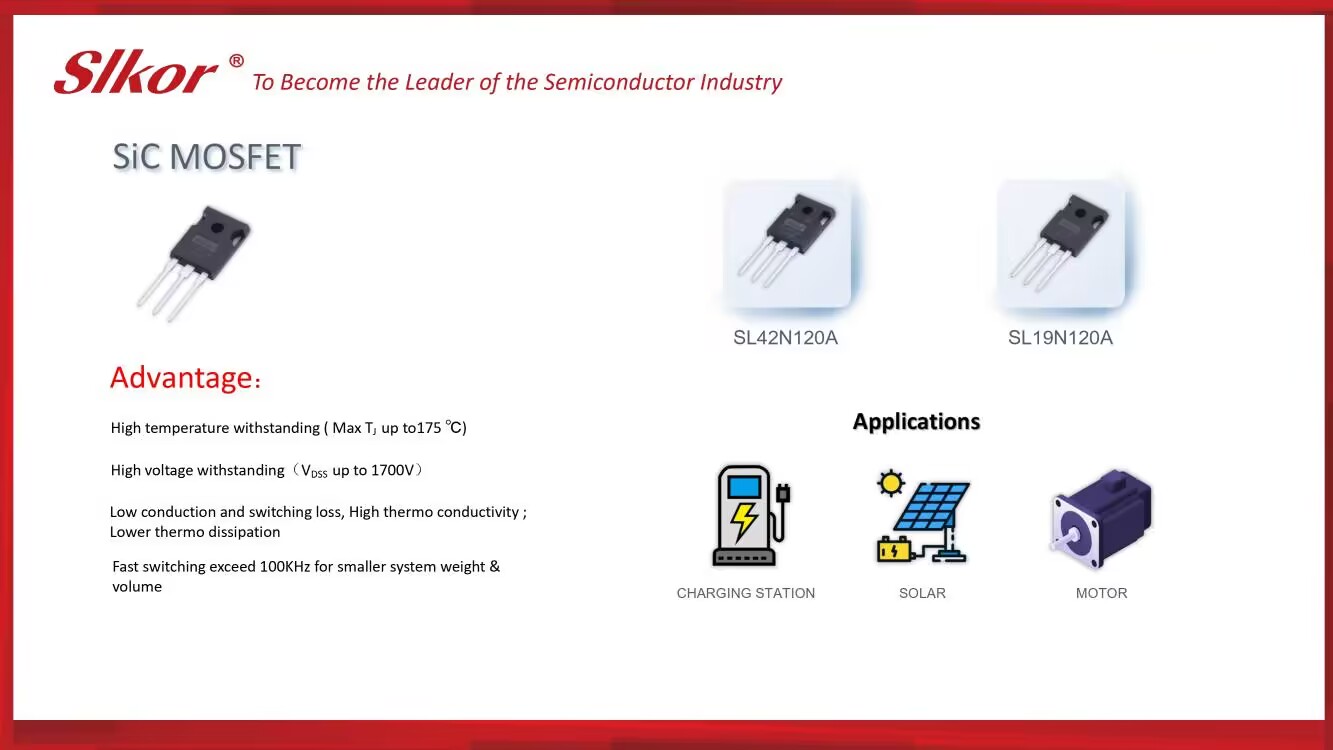Service hotline
+86 0755-83044319
release time:2024-06-28Author source:SlkorBrowse:19343
Diodes are among the most basic and widely used components in electronics, owing to their simple structure and crucial functionality in various electronic devices and circuits. This article delves into the fundamental concepts, types, applications, testing methods, troubleshooting and repair, comparisons with other components, packaging characteristics, parameter significance, historical development, and future trends of diodes.
Basic Concepts and Principles of Diodes
A diode is composed of a PN junction formed by P-type and N-type semiconductors. When forward-biased (anode voltage greater than cathode), current can flow from the anode to the cathode. When reverse-biased, the depletion region prevents significant current flow. This one-way conductance makes diodes essential in electronic circuits.
Types of Diodes and Their Characteristics
Rectifier Diodes: Convert AC to DC for powering electronic devices.
Zener Diodes: Provide stable voltages with a constant reverse voltage.
LEDs (Light Emitting Diodes): Emit light when forward-biased, used in indicators and displays.
Schottky Diodes: Known for fast switching and low forward voltage drop, suitable for high-frequency circuits and power supplies.
Varactor Diodes: Used for voltage-controlled applications like tuning circuits and oscillators.
Each type of diode exhibits specific electrical characteristics and is tailored for different applications in electronics.
Applications of Diodes in Circuits
Diodes serve critical roles in electronic circuits:
Rectification: Converting AC to DC for electronic devices.
Protection Devices: Preventing overvoltage and reverse current damage to other components.
Signal Processing: Used in signal detection, modulation, and demodulation.
Optoelectronic Devices: Including photodiodes and optocouplers for light sensing and transmission.
Testing Diodes
Diodes can be tested using a digital multimeter:
In forward bias, a small forward voltage drop (typically around 0.7V) should be measured.
In reverse bias, a high resistance (typically indicating infinite resistance) should be displayed.
These tests help verify if a diode is functioning properly or has failed.
Diode Failure Analysis and Repair
Common diode failures include shorts (low resistance in both directions) and opens (high resistance in both directions). Replacing a faulty diode with a new one is typically necessary to restore circuit functionality.
Comparison with Other Electronic Components
Unlike resistors that control current magnitude without changing direction, diodes control current direction. Capacitors store charge unlike diodes, which are used for voltage control and signal processing. Transistors are composed of multiple diodes and are used for current amplification and control.
Diode Packaging and Physical Characteristics
Diodes are packaged in various forms, including axial leads, surface-mounted devices, and TO-220 packages. They are typically compact, heat-resistant, and designed with different power handling capabilities and electrical characteristics to suit various environmental and application needs.
Parameters and Their Significance
Forward Voltage Drop (V_F): The voltage drops across the diode when forward biased, affecting power dissipation and efficiency.
Reverse Leakage Current (I_R): The small current that flows in reverse bias, directly impacting the diode's reverse blocking capability.
Peak Inverse Voltage (PIV): The maximum reverse voltage a diode can withstand without conducting, determining its safe operating range in circuits.
Historical Development and Application Areas of Diodes
Diode development dates back to the early vacuum tube era and has advanced significantly with semiconductor technology. Modern diodes find extensive applications in telecommunications, computing, consumer electronics, aerospace, and many other fields, underscoring their foundational role and increasing importance in technological advancements.
Future Trends in Diode Technology
Future trends in diode technology focus on enhancing power density, reducing size, lowering power consumption, and exploring new application areas. With the rise of IoT, 5G communication, and other technologies, demand for high-performance, high-frequency, and high-temperature-stable diodes will continue to drive innovation towards greater efficiency and multifunctionality.
Conclusion
Diodes, as fundamental components of electronics, play a vital role in modern electronic devices and continue to evolve with technological advancements. This overview provides a deeper understanding of diode principles, diverse types, extensive applications, and future trends.









Site Map | 萨科微 | 金航标 | Slkor | Kinghelm
RU | FR | DE | IT | ES | PT | JA | KO | AR | TR | TH | MS | VI | MG | FA | ZH-TW | HR | BG | SD| GD | SN | SM | PS | LB | KY | KU | HAW | CO | AM | UZ | TG | SU | ST | ML | KK | NY | ZU | YO | TE | TA | SO| PA| NE | MN | MI | LA | LO | KM | KN
| JW | IG | HMN | HA | EO | CEB | BS | BN | UR | HT | KA | EU | AZ | HY | YI |MK | IS | BE | CY | GA | SW | SV | AF | FA | TR | TH | MT | HU | GL | ET | NL | DA | CS | FI | EL | HI | NO | PL | RO | CA | TL | IW | LV | ID | LT | SR | SQ | SL | UK
Copyright ©2015-2025 Shenzhen Slkor Micro Semicon Co., Ltd